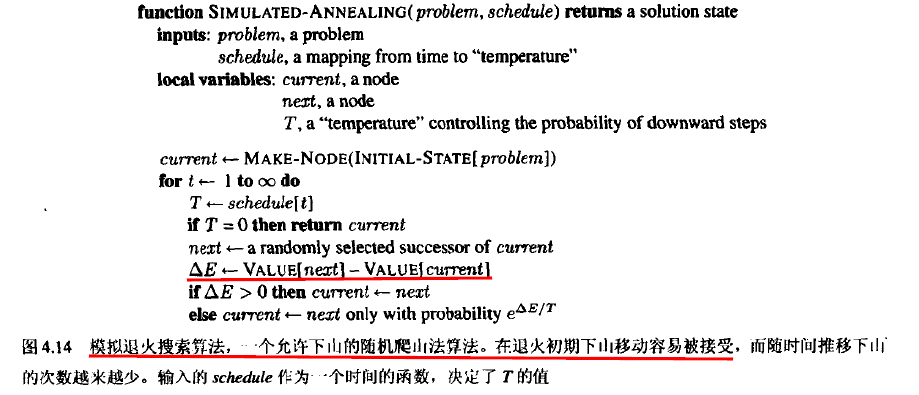爬山算法是一种只往高处走的算法,它不会考虑下山这一种选择,容易停留在局部最优解。模拟退火法试图把爬山法和随机行走结合起来,同时获得完备性和效率。
把模拟退火比作一个冶炼过程,在温度高的时候,我们很容易改变他的形状,而随着时间的推移,温度逐渐下降的时候,这块金属趋于定型。模拟退火就是这样一种算法,引入一个温度,在温度高的时候,我们有一定概率允许它作出下山的决定,而在温度低的时候,我们更趋向于上山。

/*fin 11.11
simulateAneal
*/
#ifndef SIMULATEANEAL
#define SIMULATEANEAL
#include"queenCreator.h"
#include<iostream>
#include<vector>
#include<stdlib.h>
#include<time.h>
#include<cmath>
using namespace std;
queen getRandomSuccessor2(queen q){
//随机取一个后继
int col = rand() % 8;
int row = rand() % 8;
while (row == q.getrow(col)){
col = rand() % 8;
row = rand() % 8;
}
queen newq(q);
newq.queenset(col, col, row);
newq.correct();
return newq;
}
bool simulateAneal(queen q,int* sum){
q.correct();
//设置初始温度,下降速率,凝固温度
double temperature = 10000.0;
double coolingRate = 0.9999;
double absolutetemperature = 0.0001;
queen newq(q);
while (temperature > absolutetemperature){
//相当于schedule[i] = temperature*coolingrate^i
double T = temperature;
if (newq.getconflict() == 0){ return true; }
queen q2 = getRandomSuccessor2(newq);
double E = newq.getconflict() - q2.getconflict();
double posibility = exp(E / T);
double r = rand() % 100;
if (E > 0){
newq = q2;
(*sum)++;
}
else if(r < posibility*100){
newq = q2;
(*sum)++;
}
temperature *= coolingRate;
}
return false;
}
#endif参考资料:
大白话解析模拟退火算法
1
FIN 11.11/19.53